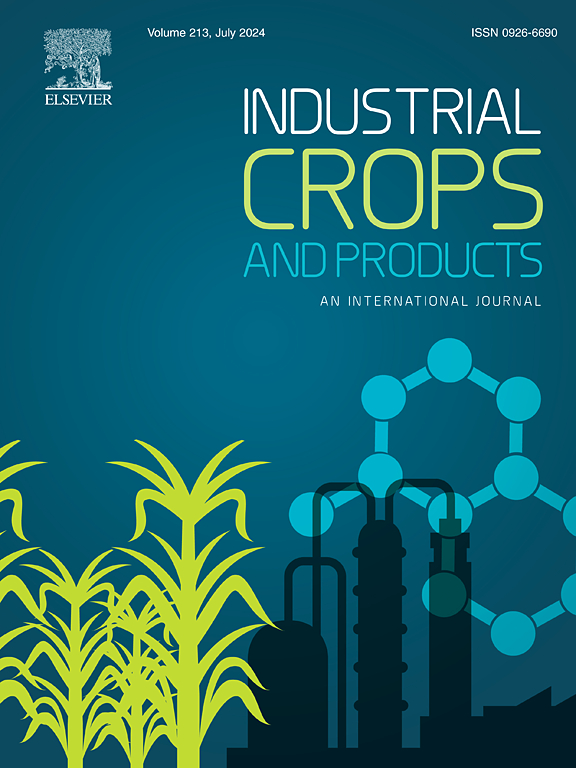Corn starch based biocomposite films reinforced with cellulosic nanocrystals extracted from corn husks (Zea mays L.): Characterization and application in cherry tomato packaging
IF 6.2
1区 农林科学
Q1 AGRICULTURAL ENGINEERING
引用次数: 0
Abstract
In this study, corn starch-based biocomposite films reinforced with cellulosic nanocrystals isolated from corn husks (CCNC) were developed and characterized with the intention of effectively utilizing lignocellulosic by-products. CCNCs were extracted by depolymerization process of corn fibers in an alkaline treatment followed by bleaching, acid hydrolysis and mechanical dispersion. Biocomposite films were formulated with corn starch (CS), sodium alginate (SA), glycerol (G) and different concentrations of CCNCs (0–8 % w/w) using the casting method. The results of the characterization of CCNCs showed a smooth and porous surface with an average length between 100 and 250 nm, a thermal stability higher than 400 °C due to its crystallinity (70.08 %). Meanwhile, the addition of 4 %-8 % CCNCs to the corn starch polymer matrix significantly improved the mechanical properties, with higher tensile stress, a 30 % reduction in WVP and a significant decrease in transmittance accompanied by a crack-free surface. Cherry tomatoes in biocomposite films reinforced with 6 % and 8 % CCNC proved effective in reducing weight loss and had relatively stable content of total soluble solids and pH value during storage up to 10 days at 26 °C. Therefore, it is proposed that CCNCs extracted from corn husks, integrated into starch films, have great potential in the packaging industry, representing a viable option to replace plastic packaging in the food sector.

从玉米壳中提取纤维素纳米晶体增强玉米淀粉基生物复合膜:表征及其在樱桃番茄包装中的应用
本研究开发了玉米淀粉基生物复合薄膜,并对其进行了表征,其中使用了从玉米皮中分离出来的纤维素纳米晶体(CCNC),目的是有效利用木质纤维素副产品。CCNC 是通过玉米纤维在碱性处理中的解聚过程提取的,然后进行漂白、酸水解和机械分散。生物复合薄膜由玉米淀粉(CS)、海藻酸钠(SA)、甘油(G)和不同浓度的 CCNCs(0-8 % w/w)采用浇铸法配制而成。CCNCs 的表征结果表明,其表面光滑多孔,平均长度在 100 至 250 nm 之间,由于其结晶度(70.08%),热稳定性高于 400 °C。同时,在玉米淀粉聚合物基质中添加 4%-8% 的 CCNCs 能显著改善机械性能,提高拉伸应力,降低 30% 的 WVP,显著降低透光率,同时表面无裂纹。使用 6 % 和 8 % CCNC 增强的生物复合膜中的樱桃番茄有效地减少了重量损失,在 26 °C 下储存长达 10 天期间,其总可溶性固体含量和 pH 值相对稳定。因此,建议将从玉米皮中提取的 CCNC 与淀粉薄膜结合,在包装行业具有巨大潜力,是食品行业替代塑料包装的可行选择。
本文章由计算机程序翻译,如有差异,请以英文原文为准。
求助全文
约1分钟内获得全文
求助全文
来源期刊

Industrial Crops and Products
农林科学-农业工程
CiteScore
9.50
自引率
8.50%
发文量
1518
审稿时长
43 days
期刊介绍:
Industrial Crops and Products is an International Journal publishing academic and industrial research on industrial (defined as non-food/non-feed) crops and products. Papers concern both crop-oriented and bio-based materials from crops-oriented research, and should be of interest to an international audience, hypothesis driven, and where comparisons are made statistics performed.
 求助内容:
求助内容: 应助结果提醒方式:
应助结果提醒方式:


